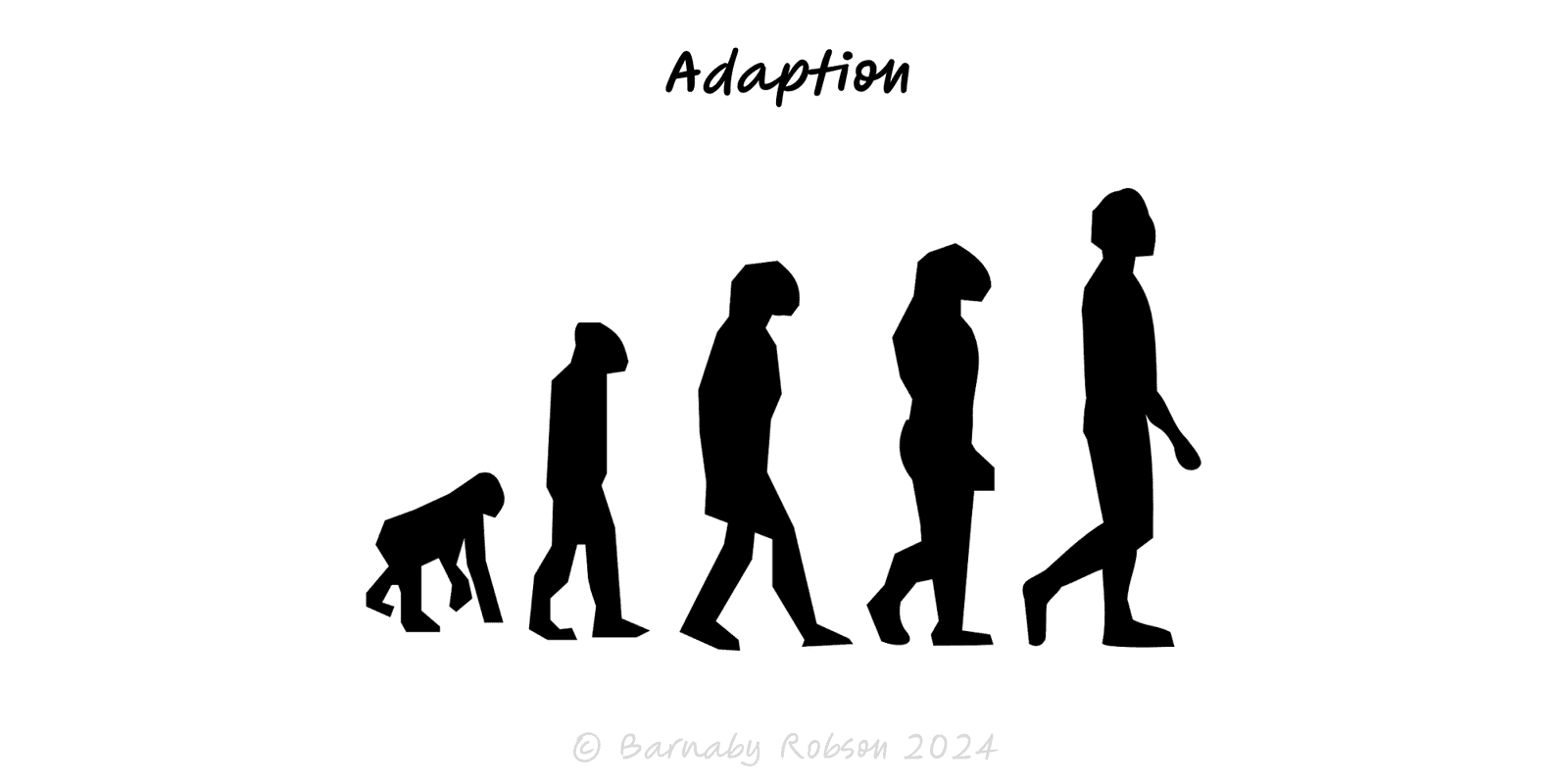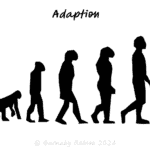Adaptation
General usage; roots in evolutionary theory, cybernetics (W. Ross Ashby), and organisational learning (James March)

Adaption (adaptation) is the capability to change in response to feedback from the environment. In organisations it means sensing what’s shifting, experimenting safely, and updating products, processes and structures so the system’s fitness improves over time. It privileges learning speed and option value over perfect plans.
Sense → decide → act (loops) – faster, tighter loops (OODA) raise learning rate.
Variation → selection → retention – run small, diverse probes; keep what works, drop the rest.
Exploration vs exploitation – balance new options with scaling what already works.
Requisite variety – your response set must match environmental variety (Ashby).
Modularity & loose coupling – change parts without breaking the whole; reduce blast radius.
Optionality – reversible, low-cost moves first; preserve the right to scale.
Simple rules – a few guardrails beat heavy plans in uncertainty.
Product strategy – discovery sprints, A/B tests, iterative roadmaps.
Operating model – pilot new processes, local autonomy with standards.
Hiring & teams – T-shaped skills, redundancy in key roles, cross-training.
Supply chain & risk – dual sourcing, buffers, scenario triggers.
Personal growth – short feedback cycles for skills and habits.
Define the environment and fitness function – what’s changing and how you’ll measure “better” (e.g., activation, cycle time, unit margin, SLA).
Shrink loop time – weekly/bi-weekly cadence for sensing metrics, decisions and releases.
Run safe-to-fail probes – small, parallel experiments with clear kill/scale criteria.
Design for optionality – prefer reversible choices; keep technical/organisational modularity.
Balance the portfolio – ring-fence capacity for exploration (10–20%) while exploiting proven bets.
Codify wins – standardise practices that improve fitness; retire what no longer fits.
Overfitting – tuning to a transient signal; validate against multiple cohorts/periods.
Whiplash – changing too often without guardrails; set decision windows and thresholds.
Path dependence – architecture or incentives that make change expensive; pay down coupling.
All explore, no exploit – novelty without scale; protect core delivery capacity.
Heroics over systems – relying on effort instead of structural enablers (automation, modularity, metrics).
